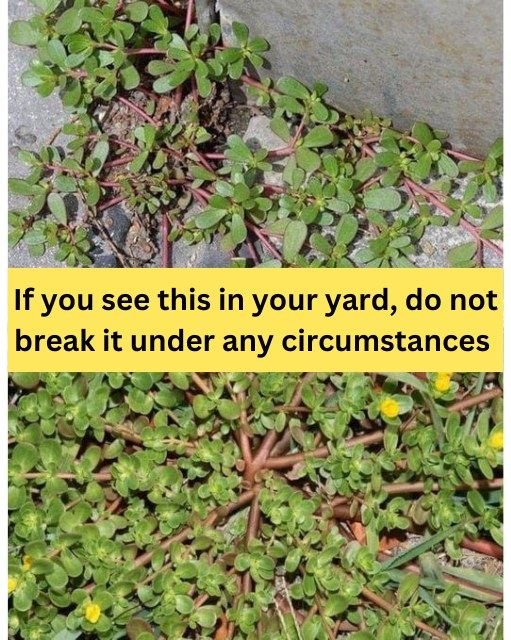ADVERTISEMENT
Purslane in Your Garden: 8 Reasons Not to Kill It 🌱
If you’ve ever found purslane growing in your garden, you might have seen it as just another weed to pull out. However, before you reach for that trowel, you might want to think twice. While purslane is often considered a nuisance by gardeners, this hardy plant is actually a superfood and a beneficial addition to your garden. With its succulent leaves, vibrant green color, and surprising versatility, purslane deserves more attention than it typically gets.
In this article, we’ll explore 8 compelling reasons why you should embrace purslane in your garden instead of pulling it out. From its health benefits to its ability to improve your garden’s health, purslane is truly a plant you don’t want to miss!
1. Nutrient-Rich Superfood
Purslane might be a garden invader, but it’s also a nutrient powerhouse. The leaves of purslane are packed with omega-3 fatty acids, making it one of the few plant-based sources of these healthy fats. These essential fatty acids are crucial for heart health and brain function.
But that’s not all—purslane is also high in vitamin C, vitamin A, and magnesium, all of which contribute to overall wellness. It also contains a variety of antioxidants that help combat free radicals in the body, supporting your immune system and protecting your cells from damage. Whether you’re looking to boost your health or simply enjoy a nutritious addition to your meals, purslane is an easy and healthy choice.
2. Easy to Grow and Low Maintenance
Purslane is a low-maintenance plant that thrives with minimal care. It’s drought-tolerant and can grow in poor soil, making it an ideal candidate for areas in your garden that may not be the best for other plants. It thrives in full sun and can handle heat, so if you’re dealing with dry spells or harsh summers, purslane is one tough plant that will keep growing no matter the conditions.
Once established, purslane can self-seed, meaning it will keep coming back year after year without any extra effort on your part. If you’re looking for a hardy, sustainable plant that won’t require constant attention, purslane is a great choice.
3. Edible and Delicious
Purslane isn’t just for the garden—it’s also a delicious, edible plant! The leaves and stems have a tangy, lemony flavor, making them an excellent addition to salads, sandwiches, or even smoothies. You can toss purslane into your summer salads, sauté it with garlic and olive oil, or use it to garnish dishes like tacos, stir-fries, and soups. Its fresh, crisp texture pairs well with a variety of foods, adding both nutritional value and flavor.
In many parts of the world, purslane is considered a delicacy. In fact, it’s a staple in Mediterranean and Middle Eastern cuisines, where it’s often used in stews and salads. So, instead of discarding it as a weed, why not incorporate it into your meals and enjoy its unique taste?
4. Natural Weed Suppressant
Purslane’s ground-hugging growth habit makes it an excellent natural weed suppressant. Its dense, sprawling leaves cover the soil, which helps block out sunlight and prevent other unwanted weeds from growing. By leaving purslane in your garden, you can reduce the need for harmful chemical herbicides and spend less time weeding.
If you have garden areas prone to weed overgrowth, letting purslane spread naturally can help you manage the space without putting in extra work or resorting to toxic chemicals. This can be particularly beneficial in vegetable gardens or flower beds where you want to keep the soil healthy and free of weeds.
5. Attracts Beneficial Insects
Purslane is known to attract a variety of beneficial insects to your garden. The small flowers of purslane are a magnet for pollinators, including bees and butterflies. By allowing purslane to grow in your garden, you’re helping to support the local ecosystem by providing food and habitat for these essential pollinators.
For Complete Cooking STEPS Please Head On Over To Next Page Or Open button (>) and don’t forget to SHARE with your Facebook friends
In addition to pollinators, purslane can also attract predatory insects that p
